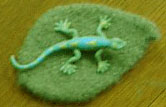Untitled as yet. It gets a number based on the date.
Cricket loom. Same warp as Midnight Riff in my last post.
This piece was full of new ideas and techniques I've never done before. I hem-stitched it on the loom at both ends, I turned the weaving 90 degrees, sewed a backing to it and figured out a way to secure the fringe neatly. I always have problems with the finish work on pieces and the logistics of hanging fiber art. I'm pleased with the things I figured out to hang this one.
I backed this piece with a lovely commercial cotton quilt backing from Inda that is dyed a lovely and uneven saffron color. I love this material so much I've gone back twice to buy additional yards.
I stitched it on the machine on three sides and hand-stitched the 4th side by the fringe.
I am especially pleased with how I was able to secure the fringe, so it hangs down in a very free, flowing way, but is completely secured in place.
I am not sure if my pictures and explanation will be able to convey what I did, but I'll give it a try.
First, remember this edge is hem-stitched, so the threads are secured pretty well, in twos. Starting at the top, I tucked the first two threads under the next two, and put them to the side. The next two threads were tucked under the third set of two, the third set under the fourth and so on, all the way down the edge.
I then wanted to make sure the pairs of threads would stay tucked under, so I used regular sewing thread and needle and, starting at the top, I made two half-hitches around each place where the threads crossed, coming up through the fabric underneath the next hem-stitch, between the two warp threads in that hem-stitch group, then around them with the half-hitches and on to the next.
I chose to hang it on a piece of branch I gathered when I was down in Bloomington at the IU Writers Conference. Sanded and beeswaxed mindfully.
I like the look of a crocheted hanging cord and the way I can make the loops around the branch without knots.
This piece was very firm because it is backed and I was able to hang it by connecting it at only two points to the hanging cords. Without the backing, most weaving is too drapey not to support it all along the top edge. I really like the way the stick looks without a lot of hanging cord wrapped around it.
I firmed that top edge further by running long ends of the cord through it.
Finally, I crocheted a little round to cover the nail head or hanging fixture.
Now back to the loom!









Your description makes it sound very throughly stitched in place. Looks beautiful and always makes me feel good to learn something I need to know.
ReplyDelete